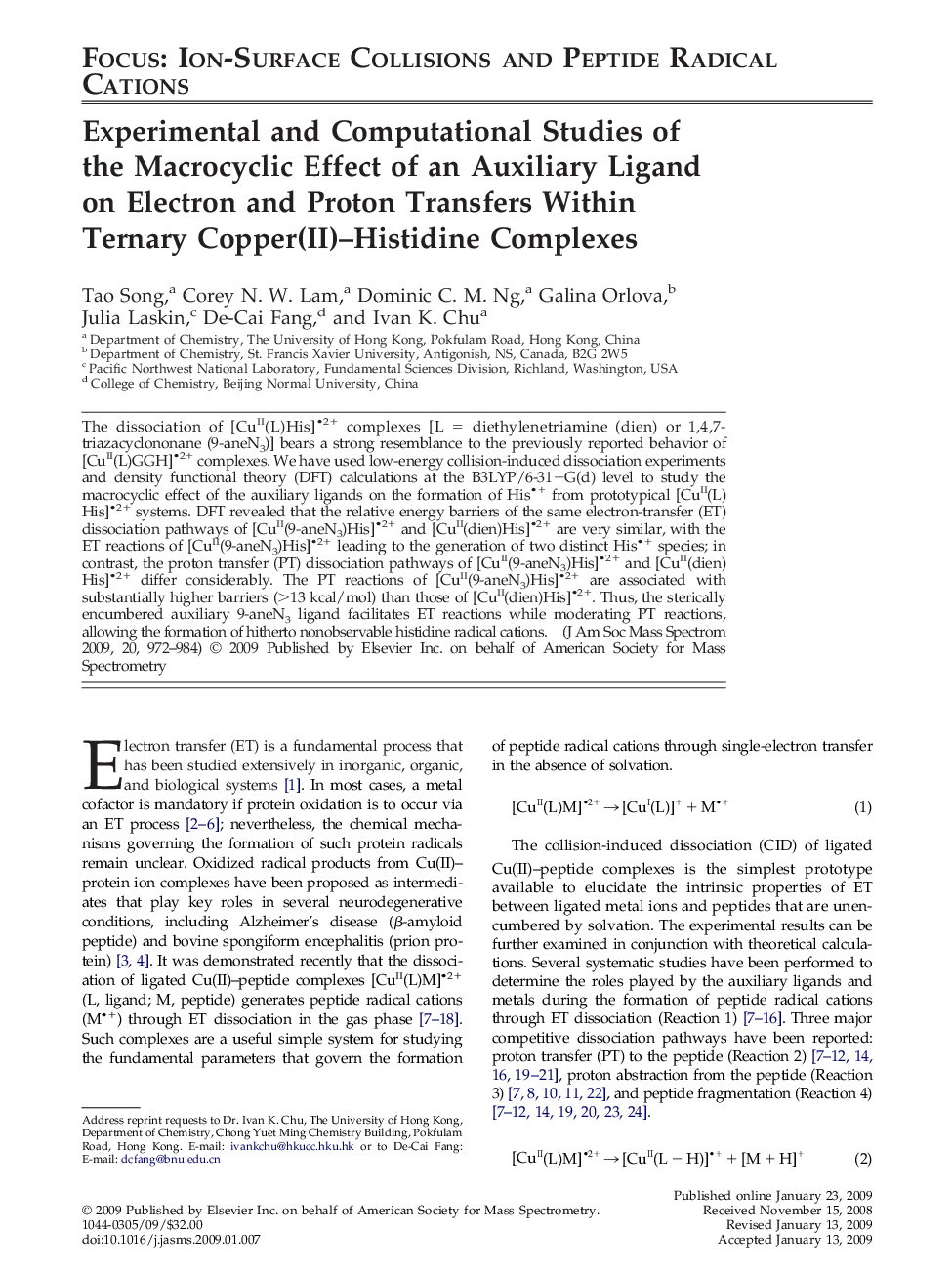| کد مقاله | کد نشریه | سال انتشار | مقاله انگلیسی | نسخه تمام متن |
|---|---|---|---|---|
| 1195270 | 964307 | 2009 | 13 صفحه PDF | دانلود رایگان |

The dissociation of [CuII(L)His]
• 2+ complexes [L = diethylenetriamine (dien) or 1,4,7-triazacyclononane (9-aneN3)] bears a strong resemblance to the previously reported behavior of [CuII(L)GGH]
• 2+ complexes. We have used low-energy collision-induced dissociation experiments and density functional theory (DFT) calculations at the B3LYP/6-31+G(d) level to study the macrocyclic effect of the auxiliary ligands on the formation of His
• + from prototypical [CuII(L)His]
• 2+ systems. DFT revealed that the relative energy barriers of the same electron-transfer (ET) dissociation pathways of [CuII(9-aneN3)His]
• 2+ and [CuII(dien)His]
• 2+ are very similar, with the ET reactions of [CuII(9-aneN3)His]
• 2+ leading to the generation of two distinct His
• + species; in contrast, the proton transfer (PT) dissociation pathways of [CuII(9-aneN3)His]
• 2+ and [CuII(dien)His]
• 2+ differ considerably. The PT reactions of [CuII(9-aneN3)His]
• 2+ are associated with substantially higher barriers (>13 kcal/mol) than those of [CuII(dien)His]
• 2+. Thus, the sterically encumbered auxiliary 9-aneN3 ligand facilitates ET reactions while moderating PT reactions, allowing the formation of hitherto nonobservable histidine radical cations.
Graphical AbstractThe macrocyclic effect of an auxiliary ligand in the dissociative electron transfer of [CuII(L)His]
• 2+ complexes has been revealed experimentally and through density functional theory calculations.Figure optionsDownload high-quality image (104 K)Download as PowerPoint slide
Journal: Journal of the American Society for Mass Spectrometry - Volume 20, Issue 6, June 2009, Pages 972–984